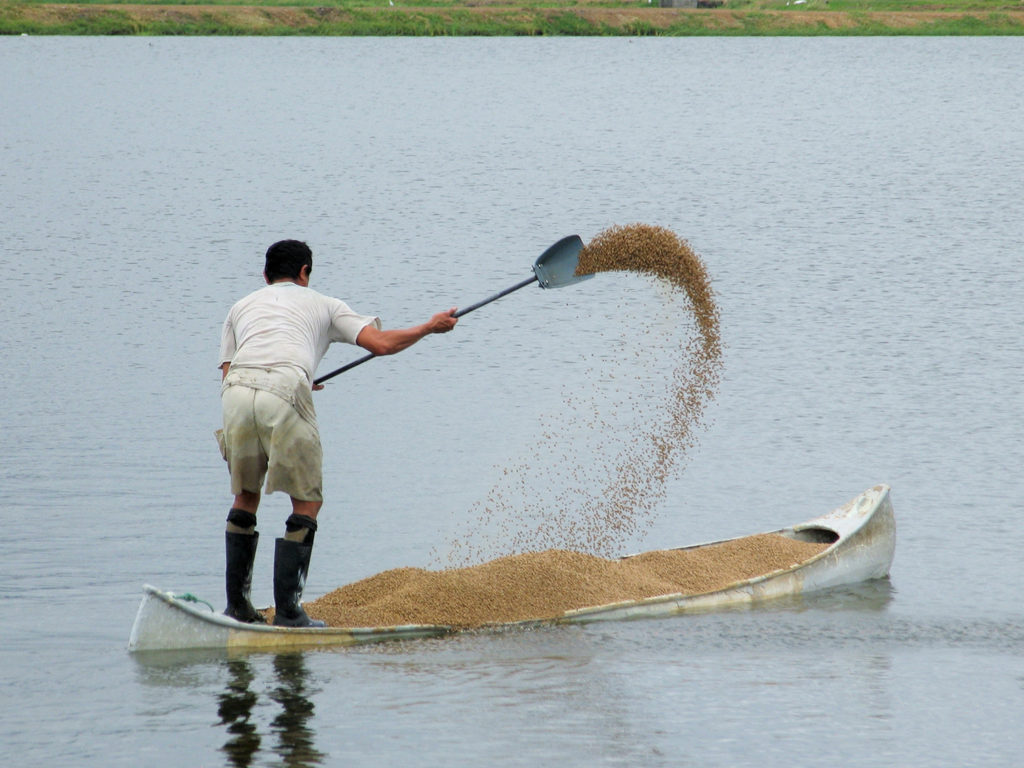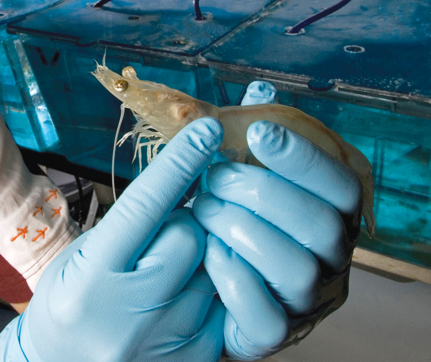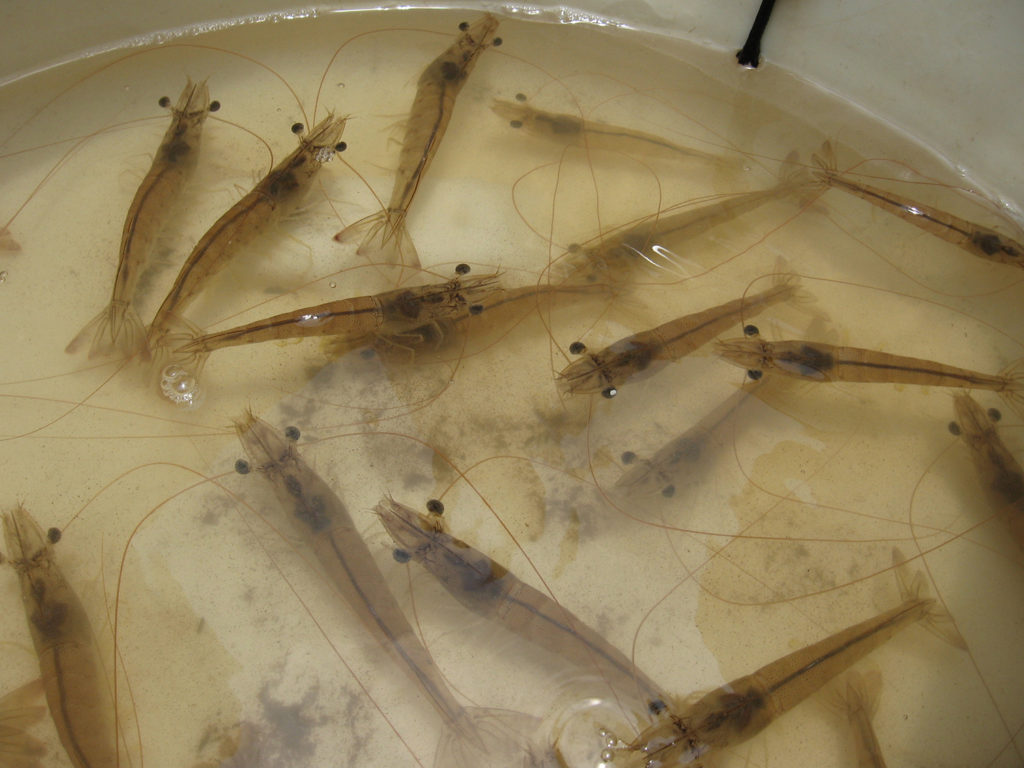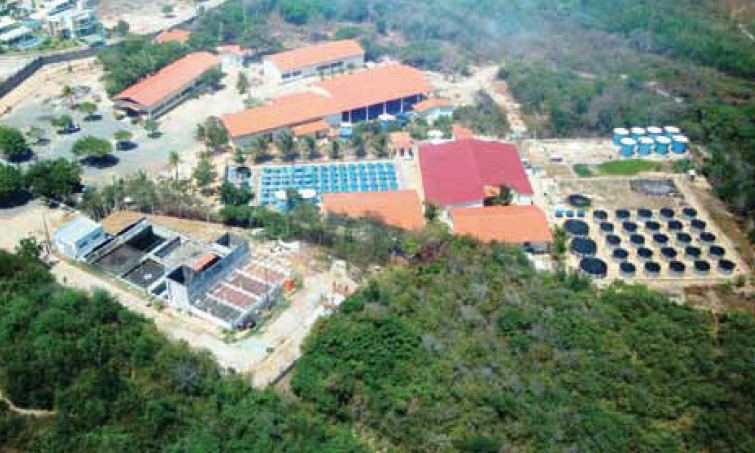Thoughts on how to maximize nutrient use and minimize nutrient loss
Farmed shrimp currently represent the single, most valuable internationally traded aquaculture commodity worldwide – valued in 1999 at U.S. $6.7 billion, or 12.4 percent of total global aquaculture production. Rapid shrimp industry expansion has resulted in an increased occurrence of diseases, usually as the result of inadequate biosecurity and stressful environmental conditions during rearing. Since the waste nutrients contained within shrimp farm effluents are derived mainly from feed inputs, and shrimp fecal metabolites and excretory products, the choice of feed or feeding regime can have a profound effect on the rearing conditions and health of the cultured species.
Waste loads
Reported waste loading rates per 1,000 kg of harvested shrimp range 10-117 kg for nitrogen and 9-46 kg for phosphorus, depending upon feed-conversion ratio. As reported by the Asian Shrimp Culture Council, these rates are shown in Table 1.
Tacon, Waste loading rates, Table 1
| FCR | Organic Matter (kg) | Nitrogen (kg) | Phosphorus (kg) |
|---|
FCR | Organic Matter (kg) | Nitrogen (kg) | Phosphorus (kg) |
|---|---|---|---|
| 1.0 | 500 | 26 | 13 |
| 1.5 | 875 | 56 | 21 |
| 2.0 | 1,250 | 87 | 28 |
| 2.5 | 1,625 | 117 | 38 |
Water use and culture system
The environmental impact of a particular diet or feeding regime largely depends upon water use, the farming system employed, and in particular whether the farm is operated as an open or closed system. As a result of pressure for increased biosecurity and disease and effluent control, there has been a growing trend within many major Asian and Latin American shrimp-producing countries toward the development of closed production systems, including zerowater exchange and/or recirculating culture systems that use in situ or external biofiltration techniques.
Closed systems surge
In Asia, Dr. Chingchai Lohawatanakul and Dr. Chen Ming Dang of Charoen Pokphand Foods Public Co. Ltd. recently estimated that 95 percent of all farms in Thailand operate as closed systems. They said that 25 percent of the shrimp farms in Indonesia, 10 percent in Vietnam, and 5 percent in China and India are closed, as well.
Similarly, Treece and Hamper (2000) reported that – through water reuse, reduced stocking densities (from 50 to 36 animals per m2), and increased aeration (from 20 to 25 horsepower per hectare) – Texas shrimp farmers reduced their solids discharges from 3.6 kg total suspended solids (TSS) per kg of shrimp produced in 1994 to 0.05 kg TSS per kilogram shrimp in 1998. Through the use of multiple feedings (up to 4 per day) and lower-protein feeds, ammonia discharges dropped from 50 grams per kilogram shrimp produced in 1994 to 0.4 grams per kilogram shrimp in 1998.
Greater risk with open systems
It is clear that open, flow-through farming systems reflect a greater level of risk for spreading the potentially polluting effects of uneaten feed (including dissolved nutrients), and fecal/excretory waste streams upon the surrounding aquatic environment.
Importance of microorganisms
Microorganisms play a wide variety of essential roles both inside and outside the bodies of shrimp. For example, within shrimp, microorganisms affect enzyme secretion and nutrient digestion, and the synthesis of essential nutrients, including essential amino acids, fatty acids, and vitamins. Microorganisms also promote disease resistance and shrimp health.
System health
Microorganisms also help maintain the health and stability of aquatic ecosystems by harnessing and/or removing potentially toxic substances like shrimp fecal wastes and metabolites from the water column and benthos. For example, within outdoor zero-water exchange culture systems, shrimp growth is achieved through the simultaneous consumption of both externally supplied aquafeeds and endogenously produced microbial food organisms, or “microbial floc.” This complex mixture of microorganisms typically includes bacteria, algae, fungi, protozoa, metazoa, rotifers, nematodes and gastrotrichs.
Floc effect
The fundamental difference between zero-water-exchange systems and traditional open or running-water, pond-based culture systems is that the culture species is essentially changed from a single-stomached animal to the equivalent of a multistomached animal. Microorganisms generally play a limited role in digestion and nutrient supply in single-stomach animals, but the floc plays a greater role as an in situ microbial aerobic digester or bioreactor.
Reduced feed cost
The most promising feature of zero-water-exchange culture systems is the possibility of reduced feed costs. This is due to the contribution of the resident floc to the overall nutritional budget of the cultured shrimp, and the consequent reduction of key dietary nutrient levels within the applied feeds.
Recommended actions
Despite the progressive move toward more biosecure and environmentally friendly closed systems, greater shortterm efforts must be focused on minimizing the environmental impacts of feeds within open culture systems.
Disease and pollution
The use of inadequately processed fresh feeds with poor water stability (trash fish, shelled clams, and crustaceans, including shrimp) should be reduced to limit the risk of disease introduction and increased water pollution. In particular, the refeeding of ingredients derived from crustacean aquaculture products should be avoided at all costs to prevent the possible spread of disease through feed.
Biosecurity and improved
Formulation Improved feed processing and/or sterilization techniques increase biosecurity during commercial shrimp feed manufacture. Such techniques can keep disease-producing organisms from entering the feed, including through recontamination after the pelleting or extrusion process. Further, improved manufacturing processes can lead to further development of dietary ingredients that are not subject to nutrient loss through leaching and/or pellet disintegration.
Reduce waste and maximize production
Improved storage and feeding methods at farms, including the use of submersible feeding trays for feed application and monitoring, can lead to reduced feed waste and greater shrimp production. It is particularly important to apply feed based on natural food availability and shrimp appetite demands, rather than a fixed feeding chart.
Improved water management
Better farm water management through increased water depth and mixing or upwelling will improve natural food production and microbial activity within the water column. This will help minimize water-quality fluctuations due to climatic changes, and thereby keep shrimp stress to a minimum. Maintenance of dissolved oxygen levels above critical levels (preferably above 4 miligrams per liter) can ensure that applied feeds are metabolized efficiently by shrimp, and not passed through their gastrointestinal tracts with little nutritional benefit and consequent wastage.
Improved nutrient management
Also needed are improved in situ nutrient management techniques for nutrient cycling, maximizing natural food availability and minimizing exogenous feed application. These include improved soil and water conditioning and fertilization, substrate enhancement for stimulating natural food productivity and reducing shrimp stress, and co-production of shrimp with aquatic species lower on the aquatic food chain to maximize nutrient use and minimize nutrient loss from the culture system.
Note: This article was based on “A global review of feeds and feed management practices in shrimp aquaculture,” a major review paper recently prepared by the author.
(Editor’s Note: This article was originally published in the December 2001 print edition of the Global Aquaculture Advocate.)
Now that you've reached the end of the article ...
… please consider supporting GSA’s mission to advance responsible seafood practices through education, advocacy and third-party assurances. The Advocate aims to document the evolution of responsible seafood practices and share the expansive knowledge of our vast network of contributors.
By becoming a Global Seafood Alliance member, you’re ensuring that all of the pre-competitive work we do through member benefits, resources and events can continue. Individual membership costs just $50 a year.
Not a GSA member? Join us.
Author
-
Albert G.J. Tacon, Ph.D.
Aquatic Farms
49-139 Kamehameha Highway
Kaneohe, Hawaii 96744 USA
Tagged With
Related Posts

Responsibility
Ammonia nitrogen dynamics in aquaculture
The major sources of ammonia in aquaculture ponds are fertilizers and feeds, and problems with high ammonia are most common in feed-based aquaculture.

Aquafeeds
Biofloc: novel sustainable ingredient for shrimp feed
Recent research is demonstrating that biofloc-based proteins are suitable replacements for fishmeal in aquaculture diets. Since bioflocs can be produced while treating aquaculture effluents, a waste product can be converted into a valuable resource.

Health & Welfare
Cost-effective biosecurity crucial for shrimp farming
Many shrimp producers give only perfunctory attention to routine biosecurity at hatcheries and farms. A cost-effective biosecurity program for farmed shrimp requires reliable diagnostic tools to make timely decisions to control or exclude pathogens.

Health & Welfare
Dietary levels of fishmeal, fish oil affect shrimp growth
Authors evaluated how limiting dietary essential amino acids and long-chain polyunsaturated fatty acids would affect the growth performance of white shrimp raised in a zero-water-exchange biofloc system. The shrimp were fed diets with varied levels of fishmeal and fish oil and supplemented with soy products.


